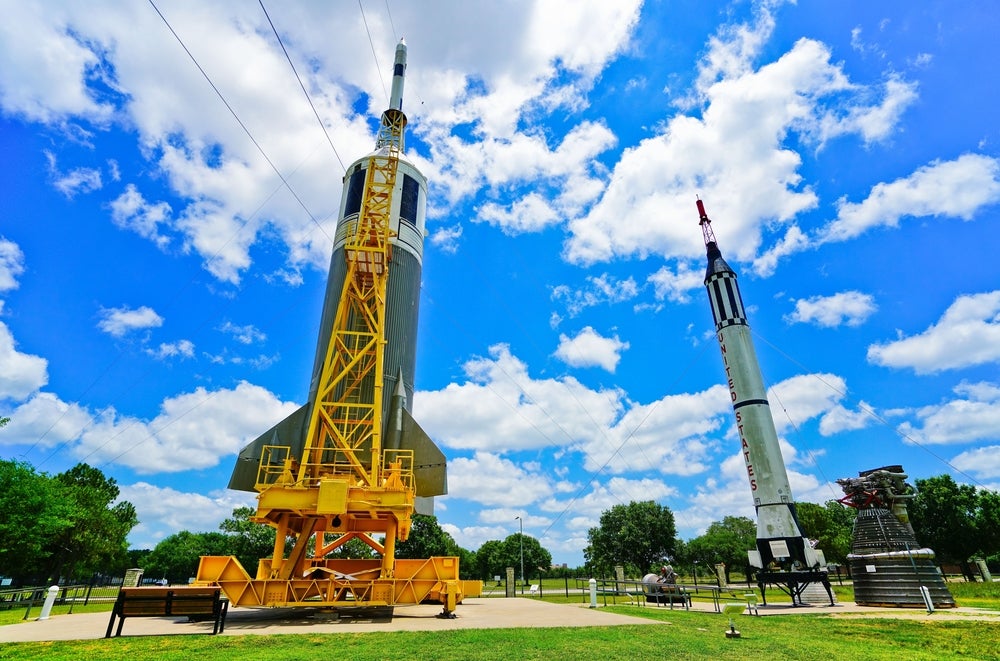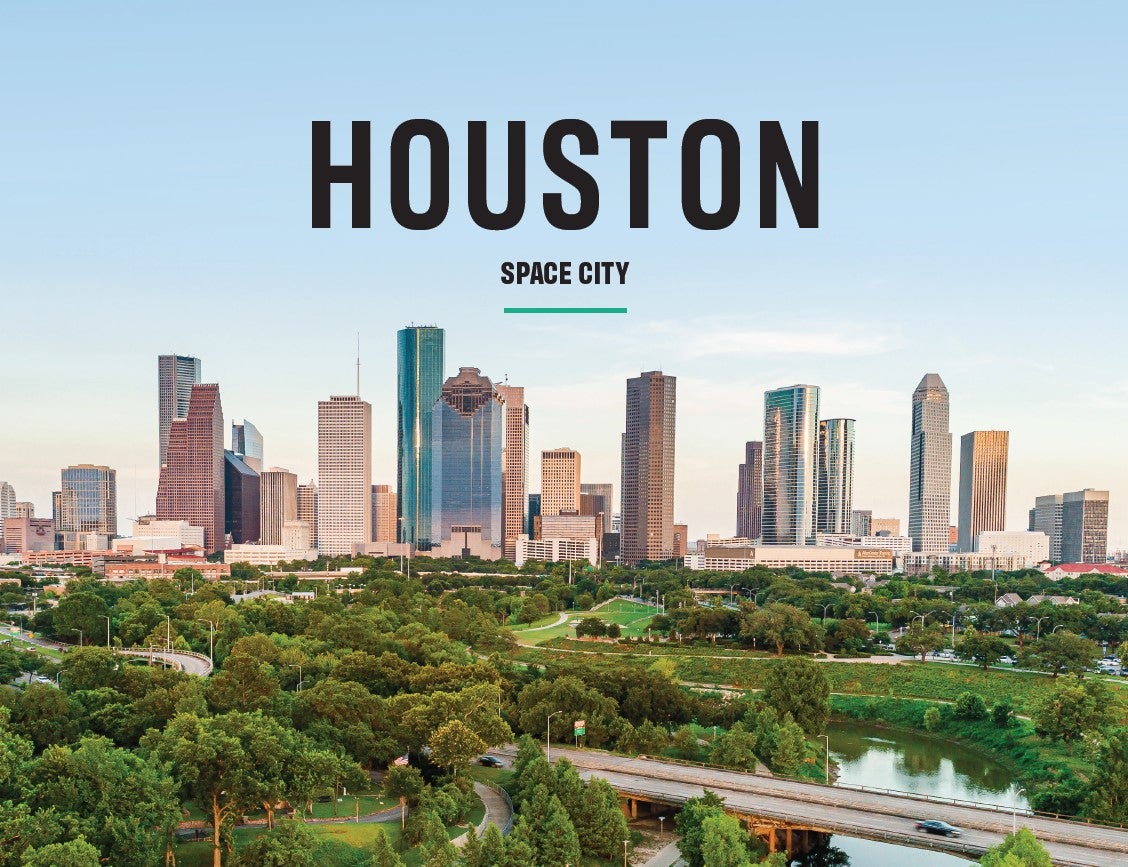
From the dawn of the space race in 1957, basic science and technology have leapt forward with each new push into the cosmos. The everyday technologies underpinning modern navigation, telecommunication and weather forecasting would have been impossible without satellite development and launches during the 20th century. Human missions to low-earth orbit and the Moon introduced revolutionary materials, battery power solutions and health therapies that are now commonplace.
Activity in space is increasing as an influx of private companies look to get in on the action. With rapid innovation in healthcare and power needed to serve an ageing population and the energy transition, the implications are huge. Deals in the commercial space industry are ramping up; GlobalData projects the space economy’s value could top $1trn by 2040. Houston, a leading aerospace hub – home to one of the US’ 12 FAA-licensed Spaceports – already sees trade in the industry worth $3bn.
As experimentation and innovation around space travel intensify, the benefits are starting to trickle out. For example, new satellites are helping energy companies track methane leaks and flag down promising new sites for wind turbines. Organisations like the Translational Institute for Space Health, led by Baylor College of Medicine’s Center for Space Medicine in Houston in partnership with the Nasa Human Research Program, are improving access to healthcare on Earth via diagnostic advancements and new wearable technologies designed to maximise astronaut performance in space. Crossover between the space race and earthbound entrepreneurialism is on the rise. Hubs like Houston demonstrate how innovation can be driven by inter-industry collaboration as much as intra-industry competition for investment.
Commercialisation and cross-pollination
Scientific advancements are deepening links between sectors all the time. Data about how organisms react to microgravity environments can increase understanding of the organism as a whole. Symmetrical structures can unfold in zero-gravity environments, a feat not possible on Earth; this could allow immensely intricate physiological phenomena like human retinas to be grown in space, with obvious implications for human health research.
Pioneering companies are already translating this potential into biological and pharmaceutical innovation. Houston-based Axiom Space, founded in 2016, is headquartered at Houston Spaceport. Last year, the company completed the world’s first all-commercial mission to the International Space Station (ISS) and plans to launch its commercial space station before 2025. With 26 payloads on its most recent voyage to the ISS, it is already playing a major role in helping life science companies get the most out of zero gravity.
One of the company’s many areas of investigation is protein crystallisation. Protein crystals produced in a microgravity environment grow larger and produce higher-quality crystals for diffraction than their counterparts back on Earth. Axiom is working with pharmaceutical companies to investigate the implications for drug discovery and development in therapeutic areas including arthritis, cardiovascular disease, multiple sclerosis, osteoporosis, cystic fibrosis and oncology.
Axiom is also making significant progress in the area of 3D bioprinting. Researchers are using 3D bioprinting in space to enhance cardiac tissue models and improve understanding around how they decay. By studying alterations in molecular and cellular properties of 3D-printed cardiac tissues aboard the ISS, researchers are forming revolutionary hypotheses about how cell function changes over time. In doing so they are laying the foundation for pharmaceuticals that could prevent cardiac ageing and decline both in space and on Earth.
Axiom is also shedding light on the mysteries of ageing more broadly. Spaceflight induces accelerated ageing, offering a unique opportunity to investigate the ageing process and develop novel interventions. A recent study housed young and older mice on the ISS to evaluate the ageing response of tissues, biological functions and other physiological measures. The genomic insights yielded from these investigations serve as the foundation for future studies and offer inspiration for once inconceivable therapies.
The unique, unforgiving laboratory of space is pushing the boundaries of other fields too. Nanoracks’ StarLab space farming centre, for instance, experiments on plant microbiomes under high-radiation, low-gravity conditions to investigate new frontiers for agricultural technology. Designed to make long-term missions to Mars survivable and habitable, the project is providing invaluable data for addressing food sustainability challenges in harsh Earth environments like deserts – crucial as the world adapts to the threat of climate change.
Space ecosystems lead the way
Space innovators have an opportunity to contribute to the betterment of humankind and solve some of the world’s most pressing challenges with their work. Collaboration between sectors creates opportunities for business – but a deftly attuned entrepreneurial backdrop is needed to make it possible.
Houston is a key example of a region where a diverse mix of industry sectors overlap to create a unique intersection of entrepreneurial collaboration. Home to Nasa’s Johnson Space Centre – boasting an annual budget of nearly $5bn and more than 11,000 employees – it is the space agency’s lead centre for life science research and application. This makes it a prime location for aerospace and life science talent to meet and mingle, finding common ground on the problems affecting both. With more than 50,000 graduates from the region’s 20 universities and colleges joining the labour force each year, these links are strengthening all the time. Houston now hosts 23,000 aerospace professionals and has been ranked 13th among the top 25 life science labour markets across the US.
To support the development of innovative technologies by the region’s start-up community, forums like the Ion are strengthening the aerospace-life science overlap and connecting entrepreneurs to the resources they need to succeed. Home to more than 266,000ft² of collaboration space including a prototyping lab, investor studio, coworking rooms, academic space and corporate innovation offices, the Ion is Houston’s headquarters for innovation.
In 2022, the Ion launched a technology transfer centre in partnership with the Johnson Space Centre, giving entrepreneurs access to Nasa’s IP portfolio. These kinds of initiatives are creating a thriving innovation ecosystem at the site, recycling knowledge and personnel among businesses based there. Jan E Odegaard, executive director of the Ion, described it as the “perfect place” for Nasa to reach across sectors to access the talent necessary to support the next era of space travel: “from healthcare to sports, e-commerce to resiliency”.
Aerospace and life science companies alike must look to these hubs to access the abundant talent, capital and entrepreneurial communities available. In Houston, there are ready-made opportunities to join a commercial space race that is changing the face of life sciences too – and plenty of support in place for companies prepared to grab them.
Download the whitepaper on this page to find out more.



